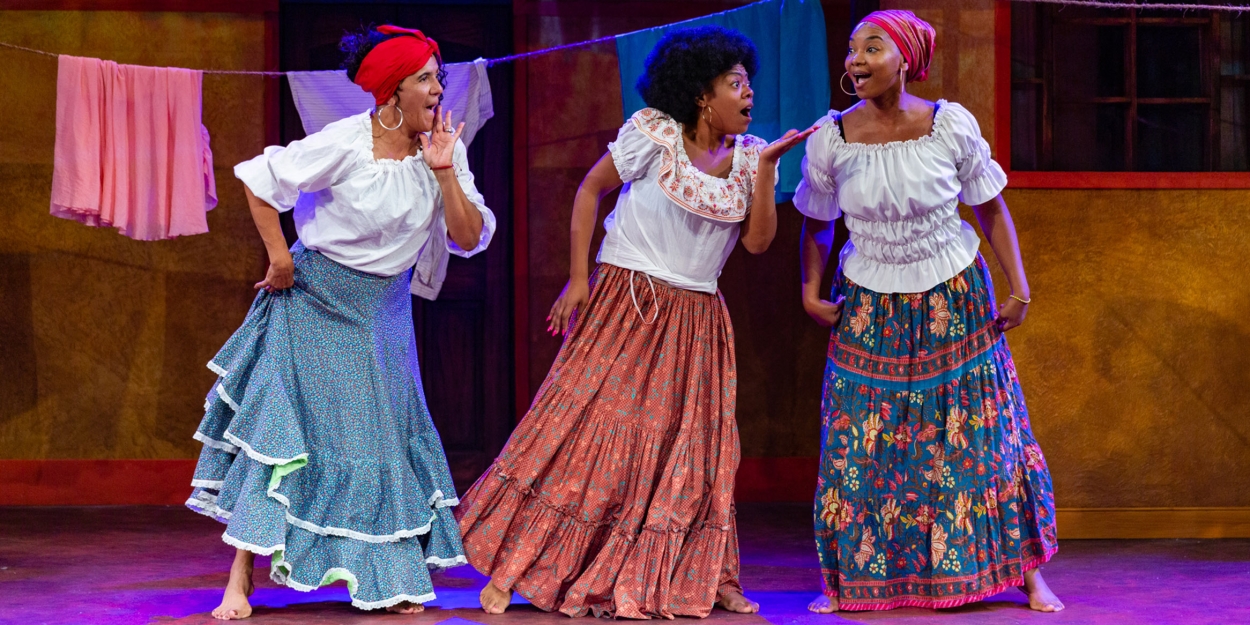Review: KUMANANA! AN AFRO-PERUVIAN MUSICAL REVUE at GALA Hispanic Theatre
A high-spirited final production from Hugo Medrano

The latest musical production from the GALA Hispanic Theatre highlights a specific but not widely known genre — that of Afro-Peruvian dance, music and poetry. Specifically, it’s about the work of the influential brother and sister team of Victoria and Nicomedes Santa Cruz, who took separate paths to enrich, enliven and expand Afro-Cuban culture in the 1960s and 70s.
More than that, though, GALA’s presentation of “KUMANANA! An Afro-Peruvian Musical Revue” Is a tribute to Hugo Medrano, the theater’s co-founder who conceived and directed the production that opened only weeks after his death last month at 80.
His very recent passing seems to give the production an added depth of feeling even in songs that are celebratory in nature.
“Revue” is a good way to describe the new work, which uses the original music and writings of the Santa Cruz siblings, organized into a chronological progression of their work, and how it adapted to the world around them, if not a fully fleshed out drama.
Librettist Anita González, a professor of performing arts and African American Studies at Georgetown puts in a few too many explanatory passages such that even the dialogue gets a bit . That may be a way to weave the songs and poems that are generally more descriptive of the social conditions Blacks in Peru had to endure, and where the biggest battles was over where one could hang her laundry line.
The heartbeat of the piece comes from the three-piece band on stage with Roberto Arguedas on guitar, Manny Arciniega on percussion and Gian Luiggi Cortez on the boxy Peruvian percussive instrument the cajón.
Shining as well are the leads, with Vicky Leyva’s portrayal of the mature Victoria Santa Cruz providing a rich and powerful tone as well as a strong presence.A charismatic Anti Padilla Vásquez, a TV star in Peru, is the younger Victoria.
As Nicomedes, Marco Campos Olivares has the relaxed and nurturing vibe of Pops Staples, who was similarly surrounded by a bevy of strong Black female voices in the Staples Singers. He also had a similar social consciousness that Santa Cruz developed in his poetry as the revolutionary spirit enveloped his country.
But Clara Chávez and Karent Hinestroza lent their voices and their dancing skills in many of the numbers. Omar Cruz Navarro, the youngest male in the cast, was an accomplished dancer and actor while the more seasoned Luis Sandoval Zapata, who also served as associate director and choreographer, had some surprising moves in him.
The street set of Milagros Ponce De Leon was enlivened by the projections of Hailey Laroe and lighting of Lucia Garcia.
There is drama in the story of the Santa Cruz siblings — both seemed attuned to the struggles of the Black minority in Peru but each found a different way to address it. Victoria went to France to expand her knowledge of dance and get a new perspective at her homeland; Nicomedes stayed and became radicalized, which reached a flourishing in his poetry, some of which is recited as the band continued to play behind him.
In fact the music never quite stopped in “KUMANANA!” Audience members were invited to get up and dance by the end (and many were glad to). And there was another song and clap-along following the encores.
Running time: Ninety minutes with one 15-minute intermission.
Photo credit: Clara Chávez, Anti Padilla Vásquez and Karen Hinestroza in “KUMANANA! An Afro-Peruvian Musical Revue.” Photo by Daniel Martinez.
“KUMANANA! An Afro-Peruvian Musical Revue,” in Spanish with English surtitles, continues at the GALA Hispanic Theatre, 3333 14th St. NW, through June 25. Masks are required for performances June 15. Tickets available at 202-234-7174 or online.
Reader Reviews

Videos

